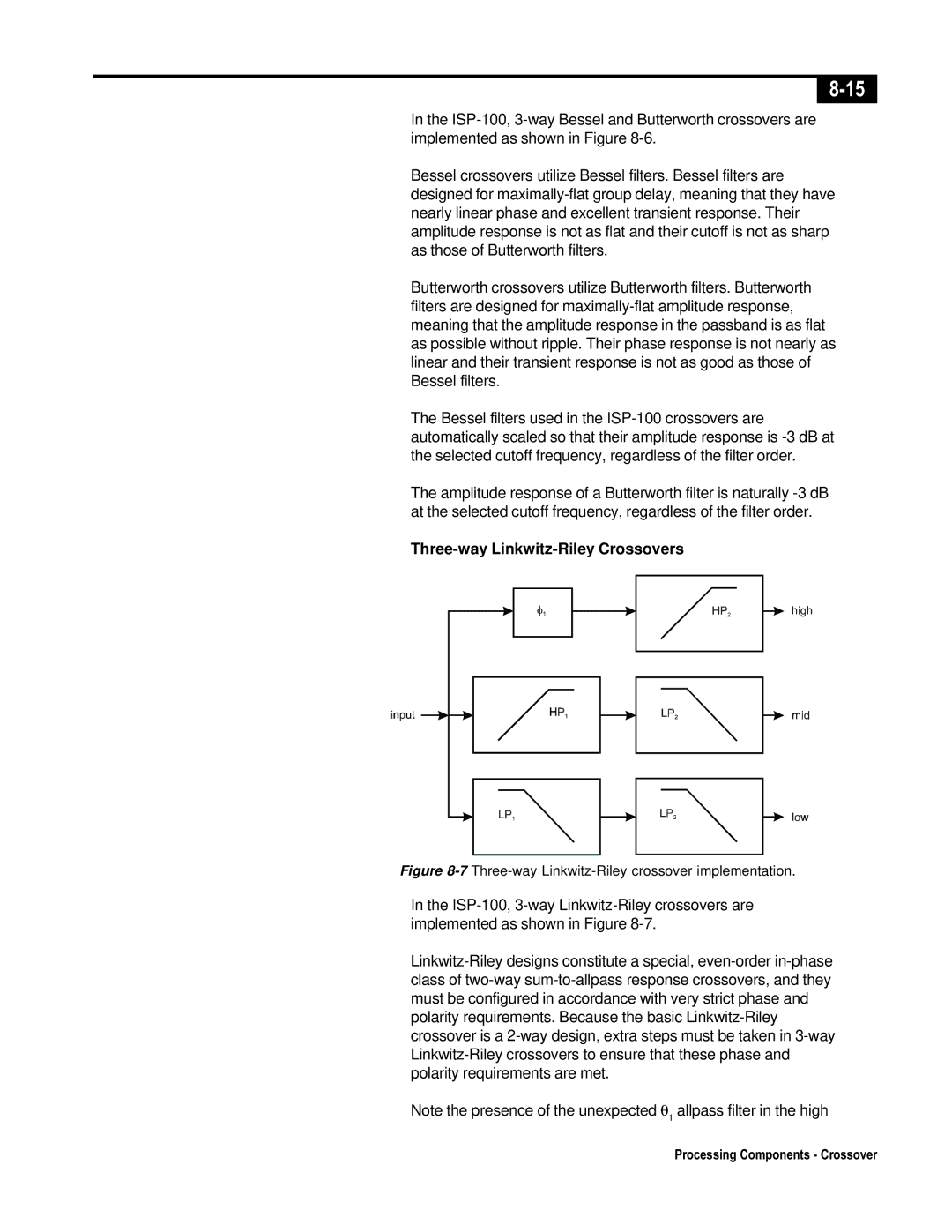
8-15
In the ISP-100, 3-way Bessel and Butterworth crossovers are implemented as shown in Figure 8-6.
Bessel crossovers utilize Bessel filters. Bessel filters are designed for maximally-flat group delay, meaning that they have nearly linear phase and excellent transient response. Their amplitude response is not as flat and their cutoff is not as sharp as those of Butterworth filters.
Butterworth crossovers utilize Butterworth filters. Butterworth filters are designed for maximally-flat amplitude response, meaning that the amplitude response in the passband is as flat as possible without ripple. Their phase response is not nearly as linear and their transient response is not as good as those of Bessel filters.
The Bessel filters used in the ISP-100 crossovers are automatically scaled so that their amplitude response is -3 dB at the selected cutoff frequency, regardless of the filter order.
The amplitude response of a Butterworth filter is naturally -3 dB at the selected cutoff frequency, regardless of the filter order.
Three-way Linkwitz-Riley Crossovers
Figure 8-7Three-way Linkwitz-Riley crossover implementation.
In the ISP-100, 3-way Linkwitz-Riley crossovers are implemented as shown in Figure 8-7.
Linkwitz-Riley designs constitute a special, even-order in-phase class of two-way sum-to-allpass response crossovers, and they must be configured in accordance with very strict phase and polarity requirements. Because the basic Linkwitz-Riley crossover is a 2-way design, extra steps must be taken in 3-way Linkwitz-Riley crossovers to ensure that these phase and polarity requirements are met.
Note the presence of the unexpected θ1 allpass filter in the high
Processing Components - Crossover

